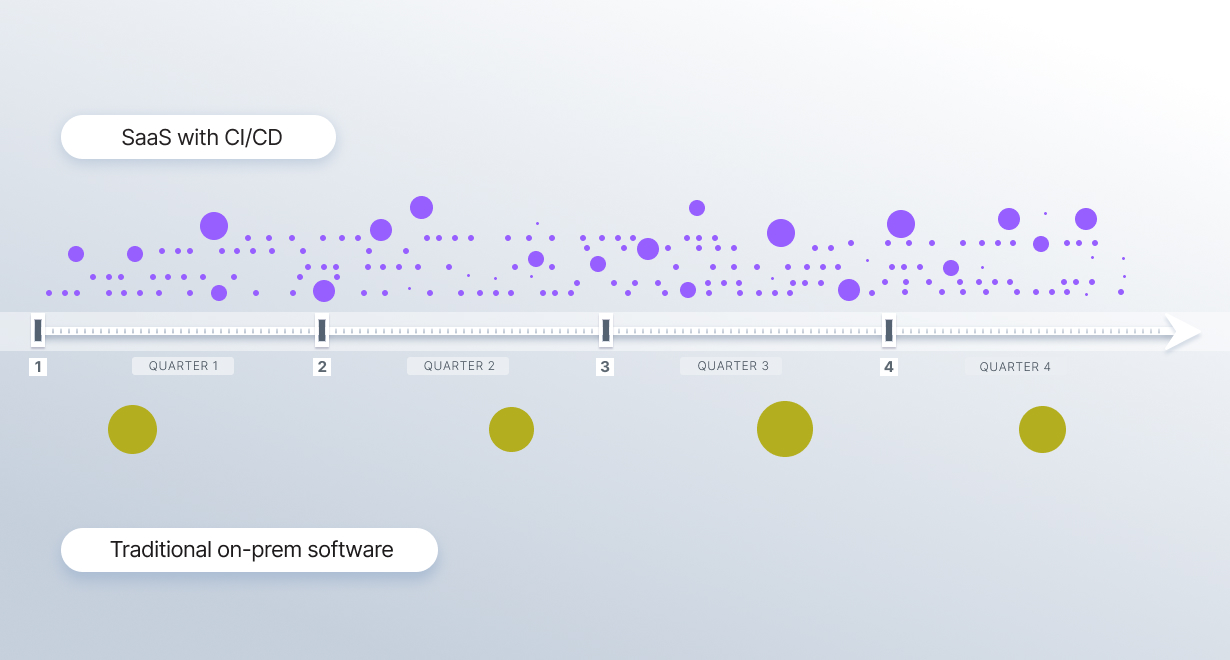In today’s technologically advanced world, speed and agility are everything. That’s why SaaS companies that use Continuous Integration and Continuous Deployment (CI/CD) pipelines are pulling ahead—and leaving the old methods behind.
With CI/CD, teams can seamlessly bring their work together into one cohesive product, moving fast and staying precise. Thanks to automation, these companies are rolling out new features and updates daily, while those sticking to traditional on-prem systems are still dealing with slower, less frequent releases.

Here’s why this competitive advantage matters to customers
1. Faster Time-to-Market
SaaS companies with CI/CD are empowered to roll out new features almost immediately. Legacy on-prem systems often require months to push out updates, slowing innovation and responsiveness to a crawl.
2. Constant Innovation
With CI/CD, SaaS companies are always evolving - testing, adjusting, experimenting, and improving daily. For on-prem systems, innovation happens at a much slower pace. Longer release cycles result in longer wait times for new features suffered by increasingly frustrated users.
3. Improved Team Collaboration
CI/CD encourages a collaborative environment where product managers, developers, and QA teams work closely together, effectively prioritizing business needs raised by end users. In contrast, legacy systems often suffer from siloed teams that are prone to suboptimal deliverables with a long feedback loop.
4. Higher Reliability
CI/CD pipelines feature built-in automated testing, enabling quicker identification and resolution of all issues. Due to high release frequency, the impact of potential regressions is also lessened and can be addressed immediately, making the overall solution more reliable. Compare that to on-prem systems, where large updates require extensive (and expensive) testing and fixes with painstakingly long wait times.
5. More Flexibility and Scalability
SaaS with CI/CD can scale up or down quickly to meet demand, adapting to customer needs in real time. Performance issues can also be addressed in the software on a daily basis. On-prem systems are often constrained by local hardware, with slower responses to changing conditions.
6. Uptime and Availability
Automation in CI/CD minimizes manual tasks, reduces maintenance costs, and enhances uptime. Automated monitoring, proactive issue resolution, and infrastructure redundancy ensure continuous service with frequent updates and fixes applied seamlessly without noticeable downtime. Traditional on-prem systems rely heavily on manual maintenance and local infrastructure, making them costly to manage. Major updates often require significant manual effort, leading to longer downtimes and less predictable service availability.
In a nutshell, SaaS companies using CI/CD pipelines are setting the pace of innovation. While legacy on-prem systems still have their place (particularly in heavily regulated industries), they’re increasingly being outpaced and outperformed by the speed and efficiency of modern SaaS solutions.
If your business is looking to remain innovative, agile, and competitive in this fast-paced market, it might be time to rethink how you approach your software delivery model.
